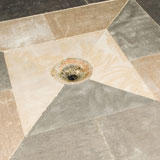It has been more than 12 years since the Occupational Safety and Health Administration (OSHA) updated its standards for occupational exposure to asbestos. Shortly after it did so, OSHA entered into a formal settlement agreement with NRCA, revising the standards as they relate to roofing work. Although these revised standards remain in place, a brief review of the scope and application of the rules is appropriate because you still may encounter jobs where asbestos-containing material is present.
About asbestos
Asbestos in roofing material may be found in select built-up roofing felts, bituminous flashings, asbestos-cement shingles, transite panels, asphalt shingles, coatings, cements and mastics. The definitive way to tell whether roofing material contains asbestos is to have a sample analyzed by a testing facility. Roofing material is subject to OSHA and Environmental Protection Agency (EPA) regulations if it contains more than 1 percent asbestos.
Asbestos is referred to as either friable (nonintact), meaning it can be crumbled and become airborne, or nonfriable (intact), indicating the fibers may be encapsulated by some type of binding agent—such as cement or asphalt—that significantly limits the likelihood of fiber release and inhalation. Most roofing material that contains asbestos is considered nonfriable and intact.
Asbestos coatings, cements and mastics were removed from OSHA regulatory jurisdiction by a 1997 U.S. Court of Appeals case that found asbestos fibers in those particular roofing products never could become airborne and pose an inhalation hazard.
Training
Compliance with OSHA standards generally involves training workers who will be removing or supervising the removal of asbestos-containing roofing material; air monitoring or assessing a workplace for asbestos exposure; adhering to work practices that minimize breaking or crushing of asbestos-containing roofing material; and ensuring proper disposal.
Roofing workers removing asbestos-containing roofing material must have at least eight hours of training in work practices and engineering controls; many roofing contractors conduct this training in-house. A supervisor of an asbestos-containing roofing material removal—also referred to as a "competent person" by OSHA—must have completed a 40-hour, EPA-approved asbestos training program and continue to complete one-day annual refresher training sessions.
A competent person makes an initial exposure assessment at the start of any work involving asbestos-containing roofing material to determine expected exposures to workers. The assessment can be based on air monitoring of workers removing the material while using proper respiratory protection and other personal protective equipment. Air monitoring can stop when results indicate levels of asbestos below OSHA's permissible exposure limit.
A negative exposure assessment by a competent person means asbestos exposures are expected to be consistently below the permissible exposure limit; it can be based on historical data from a roofing contractor's previous operations. Objective data from other contractors or industry sources, such as NRCA, also can be used to make a negative exposure assessment. Once a negative exposure assessment is made, the asbestos standards applicable to roofing apply; without the assessment, the full scope of the rules would apply.
Where specific data are lacking—for example, old lightweight insulating concrete decks with possible vermiculite content or old gypsum decks (installed before the early 1990s) being removed, drilled or otherwise disturbed—air monitoring should be conducted to determine asbestos exposure levels under an initial exposure assessment.
Mind the restrictions
Most asbestos-containing roofing material is considered regular construction debris that may be disposed of without special restrictions. However, local governments and private landfill operators may impose restrictions on the handling of asbestos-containing roofing material and require permits and additional fees for its removal and disposal. NRCA recommends you check with such entities to ascertain additional costs.
Also, forward the results of any air monitoring involving asbestos to me at hdietz@nrca.net for compilation in NRCA's database. Additional data can help other contractors comply with asbestos-removal rules.
Harry Dietz is NRCA's director of safety and regulatory compliance.

